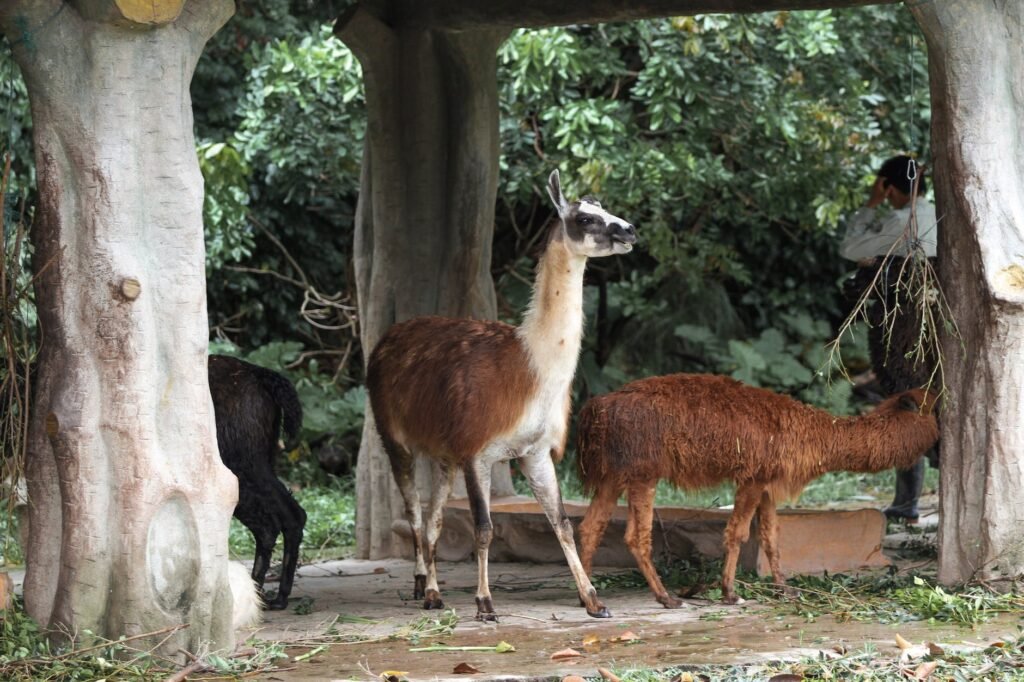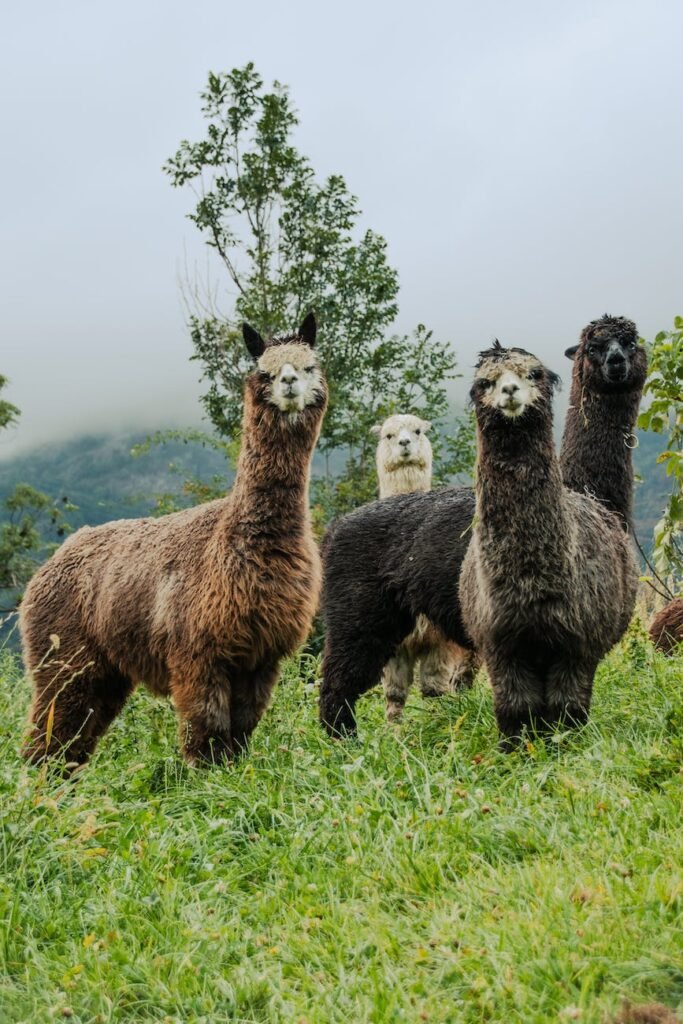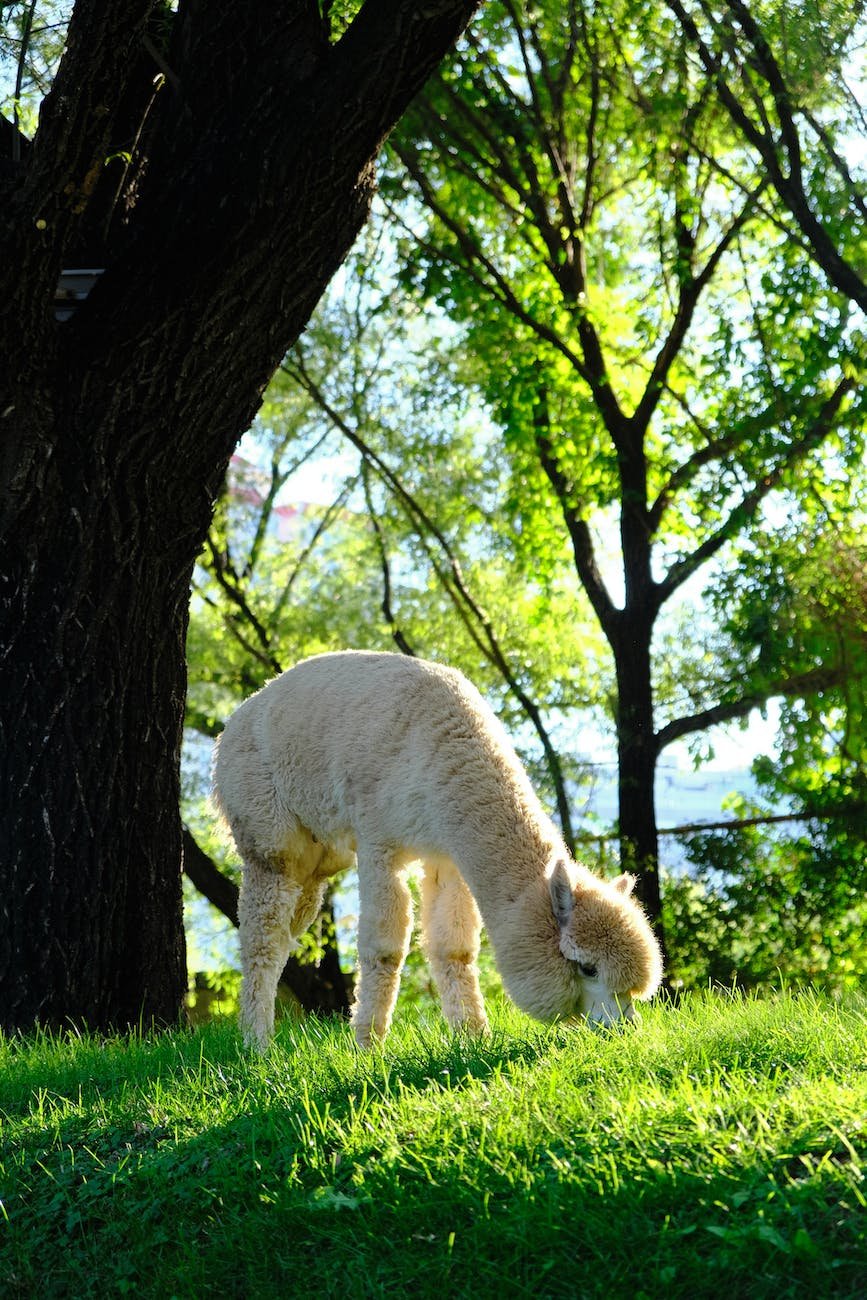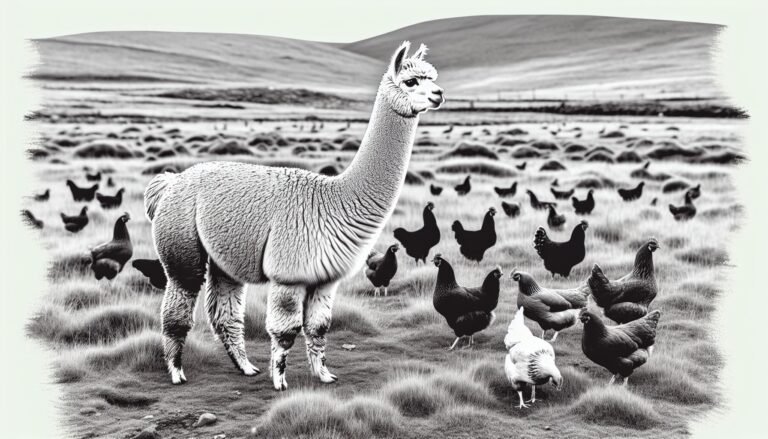Can Alpacas Safely Eat Trees? An In-depth Guide to Alpaca Diet
Ever wondered what’s on the menu for alpacas? I’ve often been asked, “Do alpacas eat trees?” It’s an intriguing question, and one that deserves a closer look.
Alpacas, those adorable, fluffy creatures, are known for their unique dietary habits. They’re not your typical farm animals, and their diet reflects that. So, let’s delve into the world of alpaca nutrition and discover if trees make it onto their plate.
This exploration will not only satisfy your curiosity, but also provide valuable insights for those considering alpacas as a backyard addition. Stick around as I unravel the mystery of the alpaca diet.
Key Takeaways
- Alpacas primarily consume hay or grass and can consume between 1 to 2 pounds of it daily, thanks to their unique stomach enzymes that aid in extraction of nutrition.
- Besides grass, alpacas enjoy dietary supplements and vegetables like carrots and apples, as well as shrubs and tree bark, to add diversity to their diet.
- Yes, Alpacas do eat trees, specifically the bark, leaves, and twigs. This habit aids in managing their continuously growing teeth and adds to the nutritional diversity.
- Not all trees are safe for alpacas to consume. Owners should be cautious of harmful trees and plants like apple seeds, peach seeds, azaleas, and rhododendrons, which contain toxic compounds.
- Expert consultation from a veterinarian or seasoned alpaca handler is advised when introducing new foods to an alpaca’s diet.
- Alpacas, being herd animals, should be kept in groups. They can be reared as backyard animals but require constant vigilance and care due to their specific dietary needs.
What Do Alpacas Eat?
When it comes to their diet, alpacas are classified as ruminants, similar to cows and sheep. They’ve got a unique stomach that allows them to extract maximum nutrition from some plants that other animals can’t digest as effectively.
Alpacas primarily consume hay or grass. On average, an adult alpaca might consume between 1 to 2 pounds of grass in a day. They’re really efficient eaters and can survive on less richly diverse pastures compared to other livestock.
Aside from grazing, they’re also big fans of dietary supplements – alpacas need a well-balanced intake of vitamins and minerals to stay healthy. Owners often provide mineral supplements to ensure their nutritional needs are met.
Additionally, alpacas also enjoy nibbling on different kinds of vegetables. Carrots, apples, and other similar vegetation are a favorite. But there’s a common question that pops up among new owners and enthusiasts: “Do alpacas munch on tree leaves and branches?” Let’s dive deeper into this question in the next section.
| Food type | Quantity | Frequency |
|---|---|---|
| Grass/Hay | 1-2 pounds/day | Daily |
| Dietary Supplements | Varies | As needed |
| Vegetation (e.g: carrots, apple) | Occasional Treats | As treats |
I must note that while this information is generally accurate, all alpacas are unique in their tastes and exact dietary needs. Always consult a veterinarian or a professional alpaca handler for personalized nutrition advice.
The Alpaca Diet: Exploring the Options
Let’s delve a little deeper into the diverse diet of an Alpaca. I mentioned earlier that alpacas primarily consume hay or grass, and typically eat between 1 to 2 pounds a day. Isn’t that fascinating? These creatures have a unique enzyme in their stomach that aids in extracting maximum nutrition from plants.

Alpacas might be herbivores but they aren’t too fussy about their greens. Apart from the regular grass and hay, these creatures also enjoy eating shrubs, tree bark, and some vegetables. Yes, you read that right, tree bark. They’ve been known to strip bark off trees and munch on it – another reason to love these versatile eaters.
Let’s name the vegetables that these cute creatures enjoy. If you’re thinking about keeping alpacas, it’s worth noting that they’re quite fond of carrots and apples. A little nibble here and there provides them with much-needed variety in their diet, and not to mention, a source of delight.
I outlined the dietary preferences of these fascinating creatures in a table for easy reference:
| Alpaca Diet | Typical Quantity |
|---|---|
| Hay/Grass | 1-2 pounds |
| Shrubs/Tree Bark | As per Availability |
| Carrots/Apples | Occasional treat |
But here’s a word of caution: even though they’ve got a powerful stomach, some food can still be dangerous for them. It’s crucial to understand what food to avoid. Some common toxic plants to abstain from include Rhododendron, Azalea, and Foxglove among others. Always do your research or consult an expert in alpaca care before introducing new foods to their diet.

Every alpaca is unique, and their exact dietary requirements can differ. Hence, it’s always important to consult with a veterinarian or professional alpaca handler to understand their needs better. It’s all about ensuring these adorable animals enjoy a diet that’s balanced, and diverse – yet safe and suited to their digestive system.
Can Alpacas Eat Trees?
Moving on to the next common question, “Can alpacas eat trees?”. The answer is, yes, alpacas can and do eat trees. However, it’s not the actual wood they’re interested in, but rather the leaves, bark, and twigs.
Alpacas are fascinating creatures adapted to thrive in challenging environments. Their dietary behaviors reflect the necessity of being able to make use of a variety of food sources. The occasional nibble on a tree not only diversifies their diet but also helps to manage their ever-growing teeth, which are continually worn down by their grinding eating habit.

Take note though; not all trees and plants are alpaca-friendly. Certain types of trees can be harmful or even downright fatal to alpacas. For instance, fruit seeds like those from apples or peaches contain a compound that can turn into cyanide when ingested. Alpaca owners must also be wary of Rhododendrons and Azaleas, notoriously toxic to many kinds of livestock including alpacas.
A diet too high in tree bark can lead to health issues as well. The high fiber content while good in moderation, can create digestive problems for alpacas if over-consumed.
| Common Toxic Plants for Alpacas | Contain Harmful Substances |
|---|---|
| Apple seeds | Cyanogenic Compounds |
| Peach seeds | Cyanogenic Compounds |
| Azaleas | Grayanotoxin |
| Rhododendrons | Grayanotoxin |
Enlisting the help of a seasoned alpaca handler or a vet can ensure that your alpaca is munching on the safe varieties of trees and plants around their habitats. These professionals can guide you through a suitable diet plan encompassing safe trees, plants, hay, and supplemented minerals. This way, your alpaca can continue enjoying their tree snacks without any unnecessary risks.
Let’s keep in mind that while trees contribute to the dietary palette of an alpaca, they do not entirely replace their primary food – hay or grass. So, it’s important to provide a balanced diet to these charming creatures to ensure their well-being and longevity.
Pros and Cons of Feeding Alpacas Trees
Understanding the benefits and drawbacks of feeding alpacas trees is fundamental to the long-term health of your alpaca herd. Every alpaca handler knows that maintaining a diverse and balanced diet is crucial for these gentle creatures, and trees certainly play a role in this diversity. But it’s not as simple as letting your alpacas lose in a forest – they’re picky eaters with specific dietary needs and not all trees are safe for alpacas.
The Advantages
For starters, alpacas naturally enjoy eating tree leaves, bark, and twigs. This behavior isn’t just about filling their bellies; it also helps manage the wear of their teeth. Alpacas have continuously growing teeth, and the process of gnawing at trees can help to naturally file down their teeth, reducing the need for human intervention.
Additionally, trees can provide a broad spectrum of minerals and nutrients not found in hay or grass alone. Like many animals, alpacas are instinctively drawn to certain herbs and plants that can fulfill their nutrient needs.
The Disadvantages
Despite the apparent advantages, important risks must be considered when allowing alpacas to feed on trees. The truth is, certain trees and plants can be harmful or even fatal to alpacas. Apple and peach seeds, azaleas, and rhododendrons are all on the list of common toxic plants for alpacas, containing compounds that, if eaten, can pose serious health risks.
In light of this, a seasoned alpaca handler or registered vet should be enlisted to design a safe diet plan. Avoiding access to poisonous plants, supplementing their diet with necessary minerals, and managing the type and quantity of trees available are all part and parcel of a healthy lifestyle for alpacas.
In a nutshell, while trees can contribute to a healthy and balanced diet for alpacas, they come with a big caution sign. It’s critical to navigate this dietary terrain with expertise and precision to eliminate the risk factor. Thus, providing a healthy diet to your alpaca is no small endeavor. It demands full-on dedication, in-depth knowledge, and consistent vigilance.
Considering Alpacas as Backyard Pets: A Comprehensive Guide
Did you know that raising alpacas in your backyard has become a popular trend for eco-friendly lifestyle enthusiasts? They’re curious and gentle animals, making them excellent companions. But before you start planning for backyard alpacas, let’s dig into what this truly entails.
First things first, alpacas are not your average pets. They’re herd animals which means they thrive in groups. If you’re serious about raising alpacas, it’s essential to have at least two; a solitary alpaca can develop stress-related health issues. Another important fact to consider is their size. Don’t let their fluffy fur fool you; they can weigh between 100 to 200 pounds!
Understanding an alpaca’s diet is key to their health and wellbeing. While their dietary needs are primarily met by grazing on pasture grasses, trees also play a pivotal role. Alpacas enjoy a snack of tree leaves, bark, and twigs, but remember, not all trees are safe. Designing a safe diet that avoids access to poisonous plants like apple and peach seeds, azaleas, and rhododendrons is paramount.
| Dangerous Trees or Plants for Alpacas |
|---|
| Apple and Peach seeds |
| Azaleas |
| Rhododendrons |
This underscores the importance of regular veterinary care. Regularly consult with an experienced alpaca handler or registered vet to help manage their health, monitor their diet, and perform any necessary dental work.
Before embarking on the journey of rearing alpacas, it’s advised to connect with local alpaca breeders and associations who can provide valuable insights in understanding alpacas, their behavior, and needs. Embracing an eco-friendly lifestyle by adding alpacas to your homestead can be a rewarding experience, but it’s one that demands dedication, knowledge, and vigilance.







Our picks
Alpaca & Wool Felted Sole Inserts: Comfy Upgrade?
Best Alpaca Socks for Hiking: Ultimate Comfort and Durability on Trails
Best Alpaca Halter for Comfort and Control